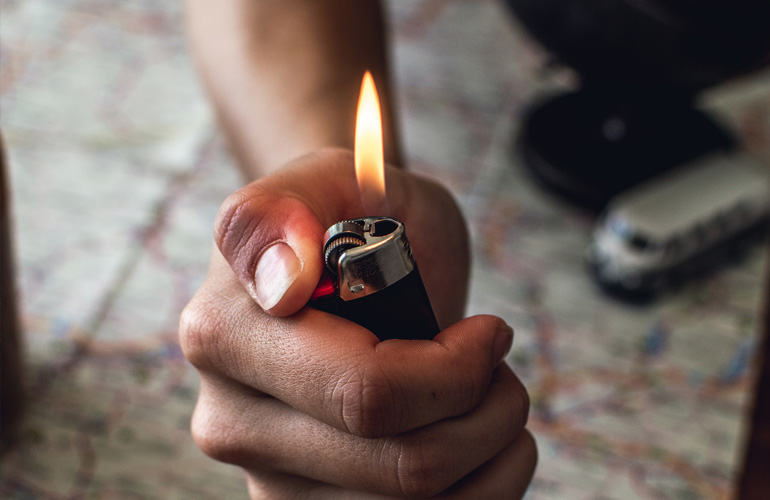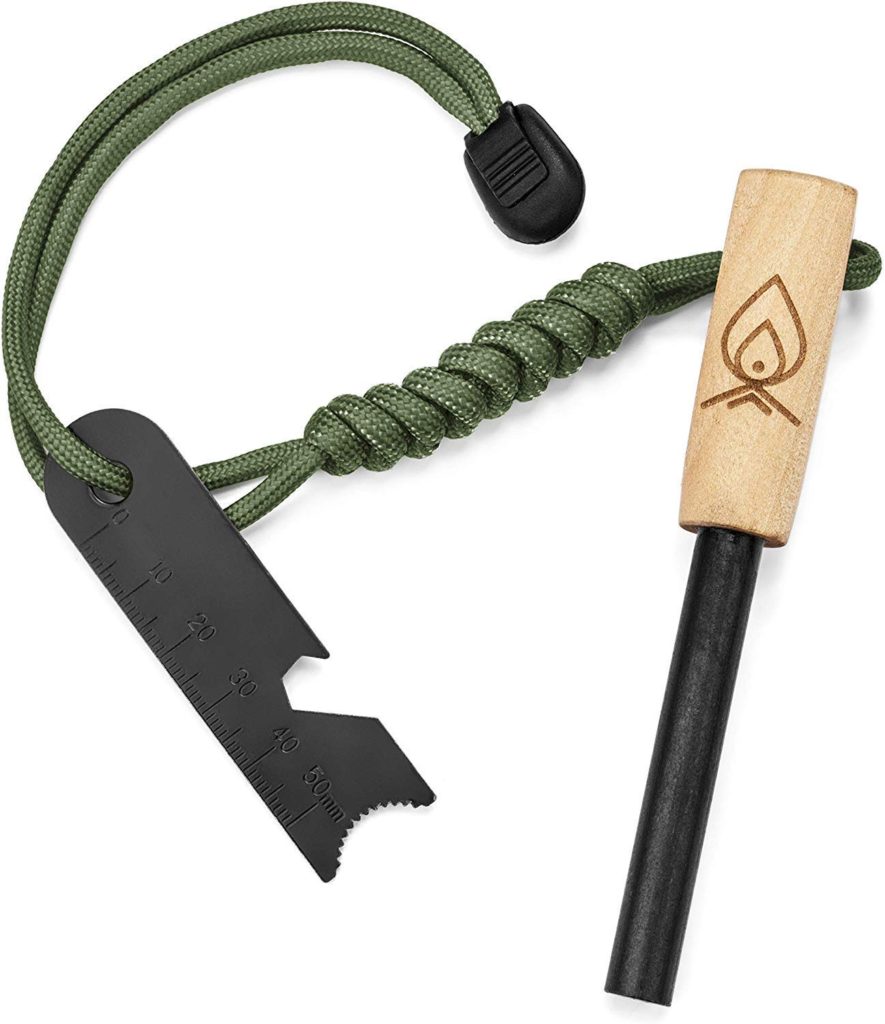The Best Fire Starters for About a Dollar

The Best Fire Starter Costs $1.00
It goes without saying that the means to start a fire is one of the most essential components of any survival kit, bugout bag, or any other collection of emergency survival necessities. Whether it’s for heat, light, cooking, or sanitation, fire is the original power source and it remains invaluable when modern infrastructure can’t be accessed.
For a long time, I’ve noticed that preppers and survivalists seem to go crazy for all manner of fire-starting gadgets and gizmos. They seem to love spending significant money on the top-quality ferro rods, flint & steel, and similar. There are countless websites and videos that review, rank, and opine about every style and brand of minimalist fire starter out there.

Now, I’m all about redundancies and having on hand multiple means to accomplish something important. As any good little prepper would, I have backups and I have backups for my backups. But on this particular subject, I cannot seem to reconcile with the idea of spending upwards of $50 on a rod of metal that makes sparks.
So what’s the better option? It’s my semi-professional opinion that there is no single better fire starter on Planet Earth than the humble BIC lighter. There are several reasons why I have been asserting for years that an ordinary BIC lighter should be in every survival kit, either instead of or in addition to some other strike-based fire tool.

Cost
As I mentioned, I’ve seen people spend (relatively) big money on ferro rod fire starters and similar. You can look online right now and find them for $10, $50, even $75. To contrast, a BIC lighter costs around one dollar. Maybe as much as two dollars at the corner gas station. That’s a big price disparity, especially considering my next point.
Sparks vs Open Flame
My main problem with ferro rods and similar products is that they don’t really make fire. They make sparks. In my opinion we should be referring to them as “spark starters”. Don’t get me wrong: If I’m in a situation where I absolutely need to get a fire going and the only thing available to me is a ferro rod, I’ll be incredibly grateful to have one.
But what about any situation where what you really need is an open flame right now? So many applications of fire are small. They don’t require a raging fire, but they do need an open flame. Things like lighting a candle, fusing the ends of a piece of rope, or lighting a cigarette won’t work with a brief shower of sparks. If you need to light a candle and the only means to create fire on hand is a ferro rod, you will first have to start basically an entire campfire in order to produce any usable fire. From there, you have access to open flame and could use a twig to apply the fire to whatever you need.
Or in about a quarter of a second, I can flick the wheel of my BIC lighter and have instant, reliable, open flame. I can light a candle, fuse some rope, or do anything else I need. And if I do need to start a campfire, I don’t need to compile a bird’s nest of squirrel fur or dandelion fuzz just to make one.
Size and Reliability
An ordinary BIC lighter is smaller than just about any ferro rod or fire-starter kit I’ve ever seen. The standard BIC lighter has been available for decades. It’s tried and true. It’s durable and impact resistant. It will work even if it’s gotten wet (as long as you let it dry out, of course). BIC advertises that you can get up to 3,000 lights out of a single standard-sized BIC lighter. Even if we round that way down, let’s say 500 lights, it will take a very long time to run out of fire if you keep a few on hand. If you buy four lighters at 500 fires per lighter, that’s two thousand fires? How long will it take you to need 2,000 fires? $4.00 for 2,000 fires? Not too shabby.
I know what you want to ask me. “But what happens if I lose my BIC lighter? What happens if it runs out of gas? What happens if it falls out of my pocket and something heavy crushes it?” Naturally I have the answer to all those questions, and that answer is: A second BIC lighter! That’s right, a second BIC lighter for the low price of one more dollar. But why stop there? I’ve got a standard BIC lighter in just about every pocket, flap, and compartment of my bugout bag, my emergency weather kit, and my winter coat. And all those lighters still add up to cost less than a quality ferro rod you could buy on Amazon.
In Summary…
It’s good to be prepared, and I absolutely encourage having backups to your backups. I just don’t think it’s prudent to spend a lot of money on a fire starter that doesn’t create fire and won’t give you an open flame before you do a lot of work under the just right conditions. Why not get a cheaper ferro rod? Maybe don’t make a ferro rod or similar your first/primary fire starter that you intend to rely upon. I’m not saying don’t have one; I’m saying it makes little sense to highly prioritize it among your fire-making preparations. If SHTF and there will be no way to purchase additional BIC lighters, a few years later your ferro rod will be invaluable. But for most people, most situations, and most circumstances, a small and quick open flame for $1.00 seems to make a lot more sense than $50 for labor-intensive sparks and no open flame.
As sort of a disclaimer, I’ll mention one final thing: When I say “BIC lighter,” I mean BIC lighter. I do not mean the crappy Papermate-style lighters. These are the boxy-shaped, translucent lighters that are filled with barely any gas and the wheel breaks off after about ten uses. Spend the extra 30 cents and make sure to get the classic BIC.

